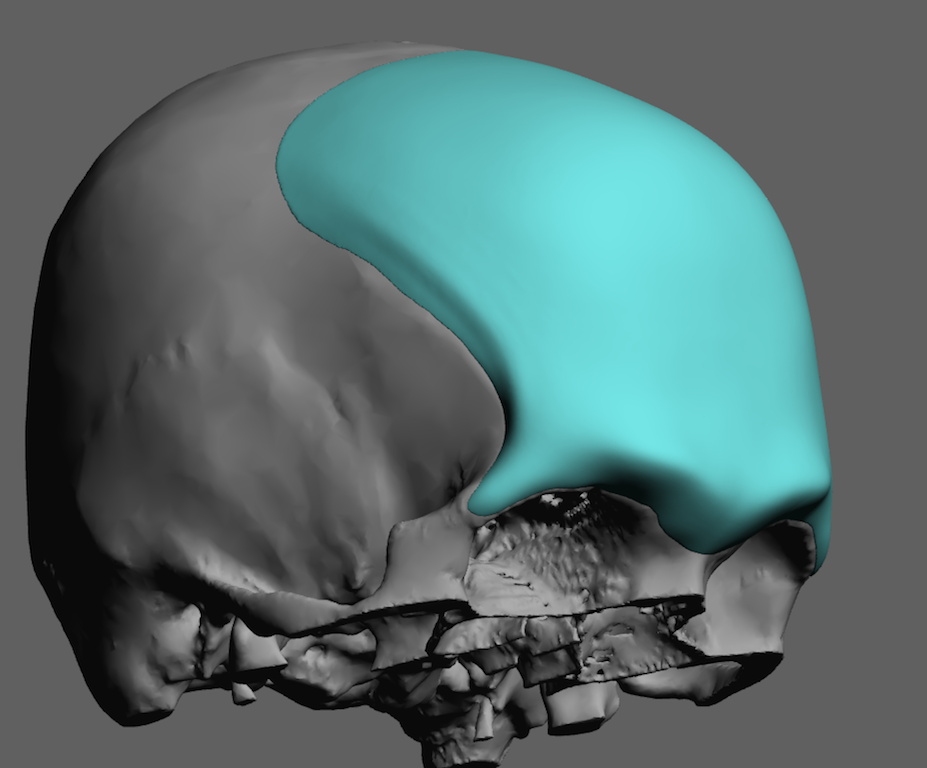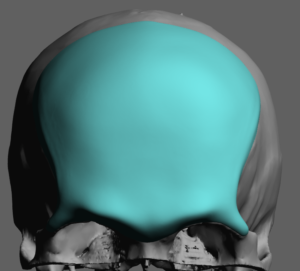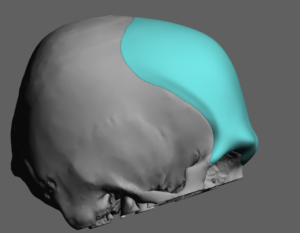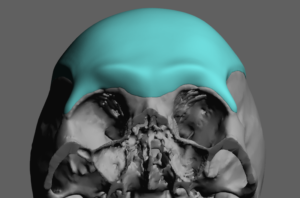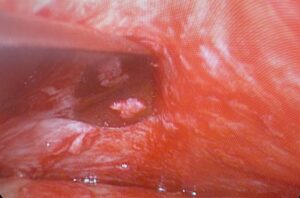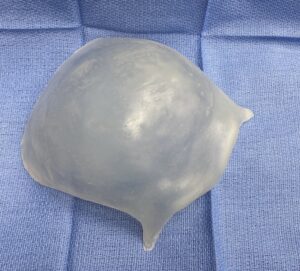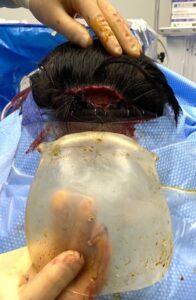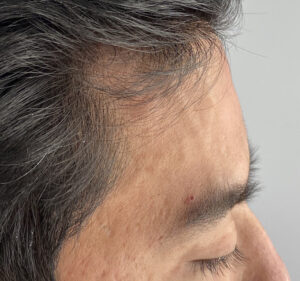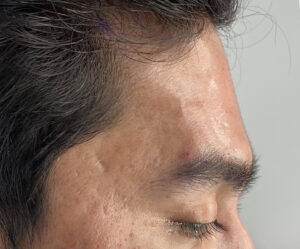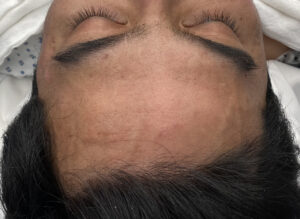Background: There are several key differences between the male and female upper third of the face. The male forehead has prominent brow bones on its lower edge which are a combination of medial frontal sinus expansion mounds and lateral frontal bone ridges which extend into the lateral orbital rim. The suprabrow forehead has a minimally retroclined angulation superiorly with a broader and less round side to side shape between more defined bony temporal lines. While lacking expressive apertures (eyes and mouth) the forehead does still offer animation through eyebrow movements and wrinkle line creations which sit atop its bony shape.
For the male considering a complete forehead-brow bone augmentation there is really only one way to effectively do it…a custom implant approach. Unlike facial augmentation below it there are no aesthetic guidelines as to how design such an implant. Considerations in the design must be given to the amount of brow bone projection, the topographic features of the brow bone, whether the augmentation will lower the vertical level of the brow bones, hw much suprabrow bone break should exist, the angulation of the forehead slope, how far back onto the top of the skull should the implant extend, and the width and shape of the temporal lines. Most of these implant design considerations lack hard numbers but are more shape oriented and thus largely artistic in nature.
Besides the implant design the other major consideration is the placement technique. Since this is an aesthetic operation the use of a typical bicoronal scalp incision for implant placement is usually not acceptable. Using a solid silicone implant its elastic deformation material property allows for it to be inserted through a scalp incision that is far smaller than its side to side diameter. It is a common misconception that an onlay skull implant (the forehead is part of the skull) needs to be as hard as bone. A flexible material will acquire the same feel as the hard and inflexible background that it rests on.

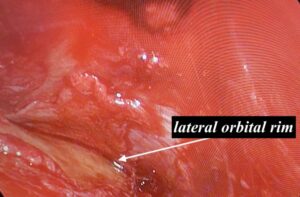
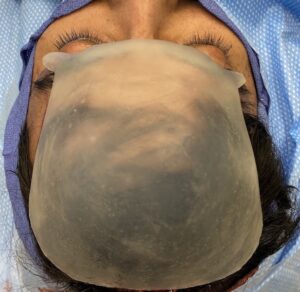
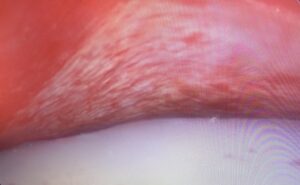
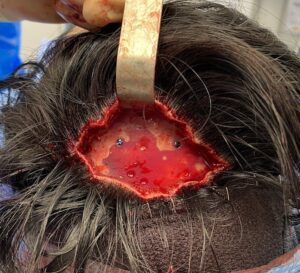

A custom forehead-brow bone implant is the powerful changer of the upper third of her face. It offers a far superior aesthetic result than bone cements and can be placed through much smaller scalp incisions.
Case Highlights:
1) Lack of brow bone projection and a sloped forehead often occurs together creating a need for a combined forehead-brow bone augmentation.
2) The custom forehead-brow bone implant is designed to create a natural eagle-shaped brow bone area and relocation/augmentation of the bony temporal line.
3) Through endoscopic subperiosteal releases and the elastic deformation property of the custom implant a minimal scalp incision can be used for placement.
Dr. Barry Eppley
Indianapolis, Indiana

